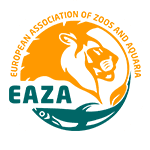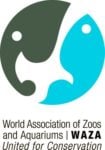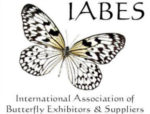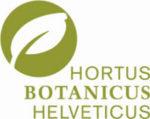Our live exhibits
Papiliorama
In the butterfly dome Papiliorama, over 1 000 exotic butterflies fly freely around the visitors in a lush tropical garden. With their dazzling colours and various shapes and sizes, they offer an enchanting ballet. The other stages in the butterfly’s fascinating life cycle can also be discovered: the hatching of a butterfly from its pupa in the emerging chamber or the eggs and caterpillars in the terrariums.
The tropical climate in the 1 200 m² dome transports visitors into the fascinating world of the tropics. The plant world is represented here with around 120 species: a colourful sea of flowers with nectar plants for butterflies, but also large palm trees and other impressive ornamental plants. Our exhibition is inhabited not only by butterflies, but also by various spectacular bird species such as nectar birds, Nicobar pigeons and turacos. The waters are populated by freshwater stingrays and other exciting fish species from the tropics of America and Asia.
Nocturama
The Nocturama is a worldwide unique exhibition: the translucent roof of the dome filters the natural daylight and creates a full moon night atmosphere inside. The reversed day and night rhythm makes it possible to take a nocturnal walk in the middle of the day and observe the mysterious, nocturnal animals of the tropical forests. Along the paths you will discover sloths, tree porcupines, night monkeys, armadillos and many other animals.
The adventure begins after a short adaptation period, during which the eyes of the visitors adjust to the darkness of the full moon night. Many of the animal enclosures in Nocturama are semi-open so that the animals can be observed exceptionally well and at close range. The winding paths lead past sloths and raccoons, but also past the large fish pond. On their walk, visitors are accompanied by the endless ballet of the free-flying bats. The tour also leads through the breeding station, where many of the Nocturama species are specifically bred as part of the breeding programmes of the European Society of Zoos and Aquariums. Thus, the Papiliorama Foundation makes a valuable contribution to the protection of numerous animal species in captivity.
Jungle Trek
Since 1989 the Papiliorama has been running a nature reserve in Belize, Central America. Jungle Trek is an authentic copy of these rich tropical habitats and offers visitors an exciting hike through the tropical forest.
On an area of 1 200 m² about 150 plant and 30 animal species can be discovered. The visitors are accompanied on their tour by the colourful Rainboy toucans, the curious Green jays or the primeval looking Black iguanas. Coatis, Pekaris, Tayras and other exciting tropical forest species inhabit in the enclosures at the edge of the dome. The two ponds are also copies of existing waters in the reserve and are home to a rich variety of fish. The 7 m high panorama bridge offers a view from above and into the canopy. The tropical forest exhibition integrated into the dome encourages reflection on the fate of these unique habitats and offers an insight into our overseas nature conservation project.
Wild Seeland
The Papiliorama Foundation is committed to familiarizing visitors with local nature and showing them the importance of intact habitats and biodiversity. Therefore, only native plants grow on the outdoor premises and new and valuable dry and wet habitats are constantly being created. Numerous native animal and plant species have already settled in the newly created biotope.
The observation hut, called “Observatorium diversitatis”, gives an insight into the newly created alluvial zone. The water level can be regulated to simulate the natural conditions in such flood zones as accurately as possible. Dry habitats, such as dry grasslands or dry herbaceous margins, provide biotopes for other species. In 2017, a survey of all the species found on the revitalised outside area of the Papiliorama was carried out. Almost 300 plant and 300 animal species were identified. These can be admired in the “Let it Grow” exhibit. In the coming years many more species will certainly be added.
Bug Biotop
During the warm season the 500 m² large Bug Bigtop is home to up to 10 different species of indigenous butterflies. The species shown are all still relatively frequent in the Swiss midlands ex. the Small Tortoiseshell, the Painted Lady, the European Peacock, the C‑Falter, the Small cabbage white and the Swallowtail. Eggs, caterpillars and pupae can be seen on the nettles, fennel and other host plants. And with a bit of luck you can watch a butterfly emerging from its pupa in the emerging chamber. Besides indigenous butterflies, the Bug Bigtop harbours a range of other small animals such as woodlice, ants, spiders, ladybirds, earthworms and aquatic insects. The show bumblebee colony offers a fascinating insight into the life of these diligent pollinators.
The wild bee calendar was created in collaboration with wildbee.ch and presents the diversity of indigenous wild bees in the course of the seasons. The busy little animals can be observed close-up in proximity of the installed nesting elements and the visitors can learn much about these important pollinators.
European Pond Turtles
Zoë Zoo – our petting zoo
What is not possible in the other exhibitions is explicitly allowed here: the animals in the Zoë Zoo can be touched and pampered to your heart’s content.
The dwarf donkeys Wesley and Pinko, the dwarf goats, the rabbits, ducks and chickens move around freely between the visitors. They love being cuddled, even by the youngest visitors, and are always patiently available for family portraits. Should they need a break, the animals can retreat to the rest zone at any time. But usually someone is always available for a caress.
Nature playground
An extraordinary playground!
Built from untreated false acacia (Robinia, an invasive species in Switzerland!), the nature playground stands in a light forest, crossed by small waters. On the climbing course the children can test their coordination and dexterity. The water playground is especially popular on sunny days. Here you can dam up, pump and divert the water to your heart’s content. The picnic area perfectly complements the family-friendly offer.






